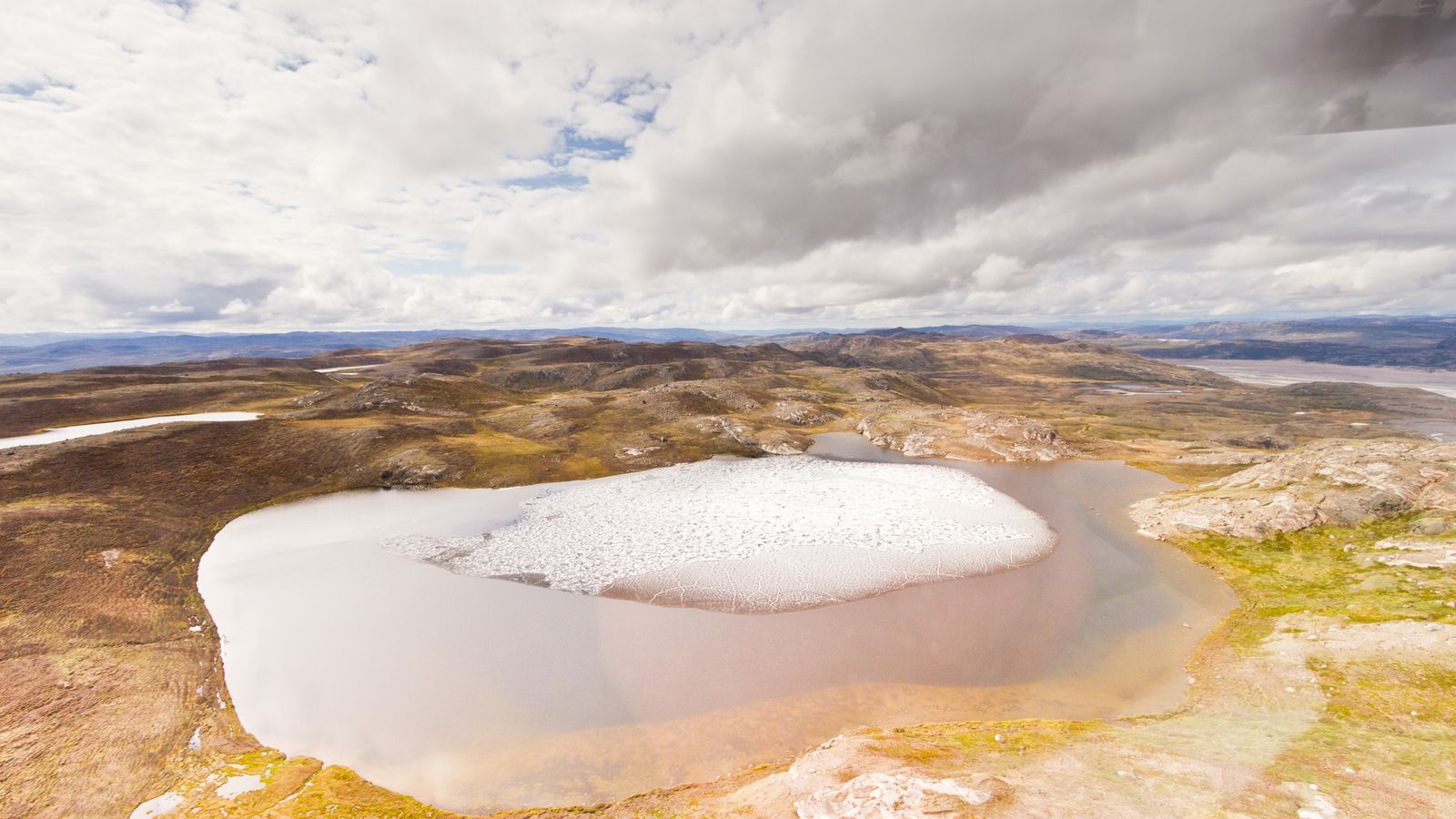Greenland may have been green and ice-free 416,000 years ago
The study, published in the journal Science, has raised concerns Greenland’s ice sheets may not be as stable as previously thought and provides information on how the region’s landscape may react to climate change.
Niamh Lynch
Sky News reporter @niamhielynch
Thursday 20 July 2023 23:26, UK
Listen to this article
0:00 / 2:59
1X
BeyondWords
Audio created using AI assistance
Embargoed to 1900 Thursday July 20 Undated handout photo issued by the University of Vermont of a modern Greenland landscape. Greenland may have truly been green as recently as 416,000 years ago, scientists have said, raising concerns that its ice sheets may not be as stable as previously thought. Issue date: Thursday July 20, 2023.
Image:
Greenland
Why you can trust Sky News
Greenland may have been green and ice-free as recently as 416,000 years ago, new research has found.
The study, published in the journal Science, has raised concerns Greenland’s ice sheets may not be as stable as previously thought and provides information on how the region’s landscape may react to climate change.
Researchers analysed sediment extracted from an ice core collected in the region, which showed evidence of leaves and moss from that period.
It indicates that a large part of Greenland’s ice melted when the Earth warmed moderately between 424,000 to 374,000 years ago, causing global sea levels to rise between five and 20 feet.
The research contradicts the widely held view that much of the Greenland ice sheet has existed for at least a million years, if not longer.
Paul Bierman, a geologist and professor at the University of Vermont in the US, said: “It’s really the first bulletproof evidence that much of the Greenland ice sheet vanished when it got warm.”
Ice cores are cylinders of drilled ice from glaciers and ice sheets that are essentially frozen time capsules, allowing scientists to reconstruct Earth’s climate from millions of years ago.
MORE ON GREENLAND
The Greenland shark was recovered from sea off Newlyn in West Cornwall. Picture: Cornwall Marine Pathology Team
How a public plea and slice of coincidence are helping British scientists uncover shark’s secrets
Living reconstruction of Issi saaneq, a newly discovered dinosaur that lived on Greenland 214 million years ago. Pic: Victor Beccari
‘Cold Bone’ dinosaur that lived 214 million years ago discovered on Greenland
An undated handout image with a view of a tiny island off the coast of Greenland, discovered during the Leister Expedition, which they say is the world's northernmost point of land. Julian Charriere/via REUTERS THIS IMAGE HAS BEEN SUPPLIED BY A THIRD PARTY. MANDATORY CREDIT. NO RESALES. NO ARCHIVES
Expedition crew believe they’ve accidentally discovered world’s northernmost island
Related Topics:
Greenland
Climate Change
The ice core analysed in the new research is 12 feet long and was drilled at Camp Century in northwest Greenland, which served as a secret US army base during the Cold War.
The ice sample was forgotten in a freezer for decades and accidentally rediscovered in 2017.
The researchers also found that the sediments in the ice core were deposited by flowing water during a warming period called Marine Isotope Stage 11.
As well as being ice-free, Greenland may have been transformed into a tundra at that time covered by trees with roaming woolly mammoths or even a boreal forest.
The authors of the research said the study is essential for understanding how Greenland’s ice sheet will respond to climate warming in the future.
Read more world news:
Six dead after Balkans hit by powerful storm as heatwave bakes continent
A big cat is on the loose in Berlin – and the locals fear their pet dogs are ‘ideal lion food’
Friend of OceanGate CEO Stockton Rush says he created a ‘mousetrap for billionaires’
The region’s ice sheets hold enough water to cause 23 feet of sea level rise, the scientists said, putting every coastal city in the world at risk.
Prof Bierman said: “Greenland’s past, preserved in 12 feet of frozen soil, suggests a warm, wet, and largely ice-free future for planet Earth unless we can dramatically lower the concentration of carbon dioxide in the atmosphere.
“Four hundred thousand years ago there were no cities on the coast and now there are cities on the coast,” he added.
Tammy Rittenour, a professor in the Department of Geosciences at Utah State University, said: “If we melt just portions of the Greenland ice sheet, the sea level rises dramatically.
“Forward modelling the rates of melt, and the response to high carbon dioxide, we are looking at metres of sea level rise, probably tens of metres.”
Related Topics
Greenland
Climate Change






























